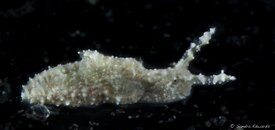- Messages
- 5,884
- Reaction score
- 2,997
- Location
- Lake Worth, Florida, United States
- # of dives
- I'm a Fish!
You can slow down and still not see anything.
Going slow might be necessary to free up some attention and allow yourself more time to absorb what you're seeing but if you're diving completely randomly then what you will see is a completely random collections of things. That can be fun and entertaining, but I think the op was looking for a less random approach.
What I often do with my regular buddy is decide ahead of time what we want to look for. For example, we might go diving in the local lake and decide to look for baby pike hiding in the weeds. That not only gives us focus on where to go (navigation plan) but what to look for (activity plan) and gives us some coordination.... two people doing the same thing together.
An example of how well this can work is how it panned out for us in Egypt. I initially found Egypt daunting because there is so much more to see than where I normally dive. So we decided to focus our attention on smaller goals.... on dive 1 we decided to go look for octopus... and found them. Next night we decided to look for cuttlefish... and found them.... the night after that we decided to look for spanish dancers.... and found them (ok.. .one).... on another dive we decided to look for squid in the shallows... and found them..... on another dive we looked for whitetips laying under table corals and found them... or go look for clown fish... etc etc.
The point of this being that where you can find cuttlefish is NOT where you can find squid and it's not where you can find octopus or sharks or clownfish or whatever else... Everything has it's own little niche. Working like this you have to learn (by trying) a little bit about the habitat of whatever it is you're looking for and by focusing your effort like this, you have a much better chance of actually finding what you want to find.... and it leaves other goals open for other dives, which keeps your diving fresh and interesting.... Futhermore you can get better and better at it over time. At this point if we know what we're looking for, especially resident species, then it's a rare day that we don't actually see it.
Anyway, this works for me and after 27 years I'm still finding new goals and making new discoveries.
R..
Very good point.....When Sandra is looking for Nudibranchs, she is actually looking for Hydroids. When she finds a big clump, she settles down and stays still for sometimes 10 minutes, untill her brain begins to see life inside the Hydroid Forest --a change in the scale of things your brain actually processes. This is why she does not find that much the first 20 minutes of most dives..but from then on, she begins to see nudibranchs continuously...she begins to see through their camoulflage --like this one previously undocumented in the US she found a week or so ago..





